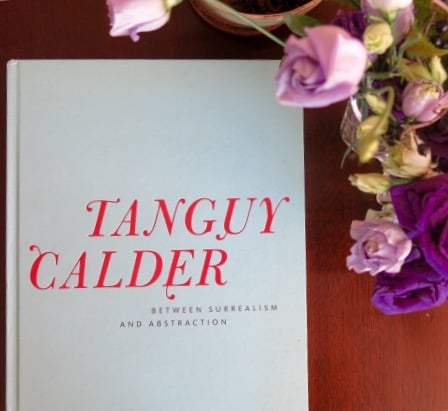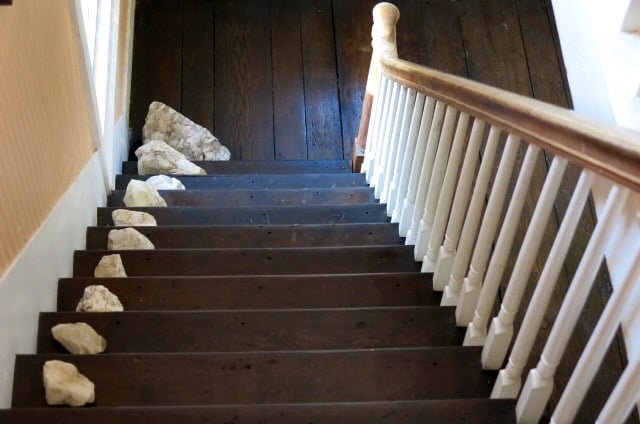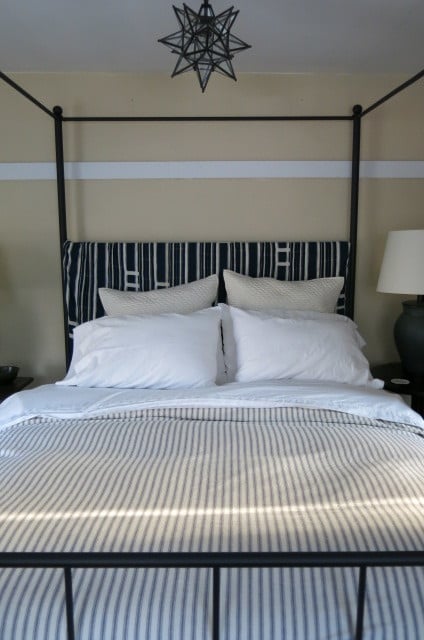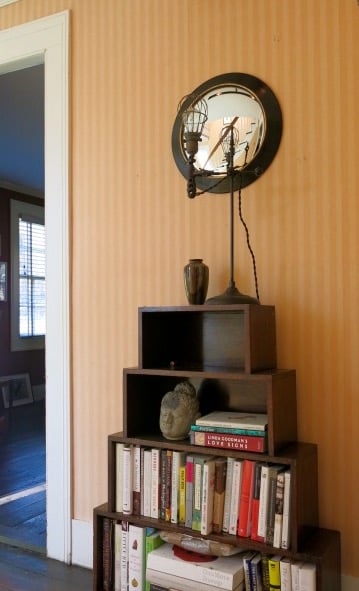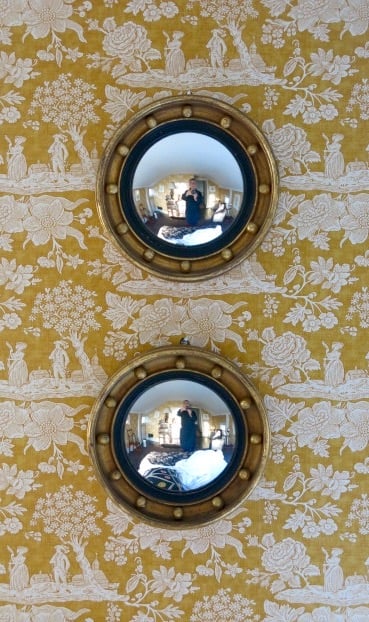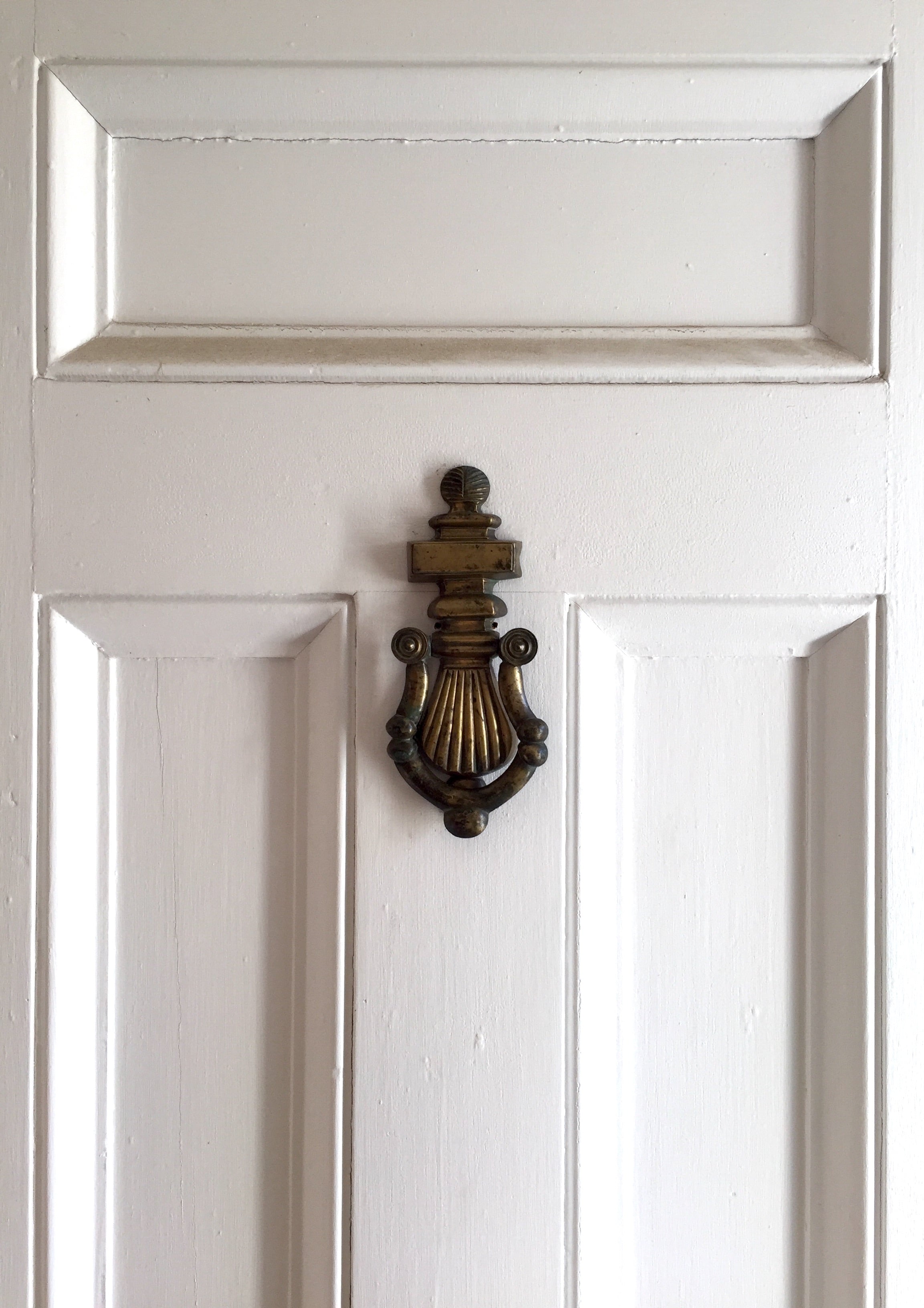Glenn Gissler: Roxbury Revenant
The name Litchfield County, Connecticut does not readily summon images of Bohemia, yet, in the 1940s, it was home to sculptor Alexander Calder and Surrealists Yves Tanguy and Kay Sage. A hidden history attends this innocently woodsy, Colonial portion of Connecticut, a narrative interior designer Glenn Gissler unearthed after he bought an 1840 Greek Revival farmhouse in Roxbury, Litchfield: “There’s a photo of the two Surrealists with Marcel Duchamp, Andre Breton and Frederick Kiesler at the Tanguy-Sage home in Woodbury, c. 1942. Their house had chic wood and upholstered art moderne furniture, and a billiards table, along with their own art and that of their close contemporaries.” Glenn found the first house Tanguy and Sage lived in for a short time, and another house they lived in for many years; the studio building bears an historic plaque.
Glenn’s own plot is a farmhouse on a bunch of acres. Of Roxbury’s and Woodbury’s environs, Glenn notes, “Nearby is a Masonic lodge, a Greek temple on top of a large rock outcropping. My house is a Greek Revival farmhouse with simple temple front references.” Glenn is taking a long look back at such layers of style in architecture and furnishings, shaping his own house with what he calls “classicism with humility”, a faintly rustic incarnation of the Greek Revival. Explains Glenn, “I’m looking to revive the Greek in my own Greek Revival farmhouse, which implies restoration. I will be doing some restorative things, some recreated, some imaginary to the house and property. I am trying to consider the Classical basis of that period of American and design history through my own property to make a home that lives for today while looking backward in time.”
Acquiring the property in early 2014, Glenn was a veteran of moving house, but he had always done so within New York City, from funky pillar to elegant post: variously, a Classic Six, a Chelsea loft and now a divine Brooklyn Heights duplex. But the house is, for Glenn, more dream than dwelling, a far less limited space than is afforded by apartments in which to test the depth of his own decorative education and expertise.
On the exterior Glenn is working to allow the land to re-express itself, more like farmland than forest. What in 1840 began as a farmhouse was expanded over time by a small landowner with aspirations to the gentry, “so there’s a certain dignity implied”, remarks Glenn.
The interior of the house, still at the threshold of its full decorative glory, expresses what I have always seen as Glenn’s gift for a rich plainness just this side of Shaker. Glenn often begins with floorcoverings; in this house he has used jute, a material heavier, more rugged than sisal, braided like expensive queen’s matting, in stripes.
The furnishing of the house is a study in the origins and development of Classical forms which mutate yet remain steadfast throughout all the places and times in which they have been interpreted. Glenn owned a pair of Robsjohn-Gibbings Klismos chairs, which, given their glamour, he hesitated to use in Roxbury. Yet Gibbings had actually derived their dimensions and bony contours from measurements he had taken from Grecian black pottery; the chairs are near-replicas of the first appearance of Classical style. Unlike Regency furniture which is very stylized, Gibbings’ furniture is literal. Glenn, quoting Gibbings, says, ” In almost every representation of Greek life the furniture is present,” adding a pronouncement of his own: “You can’t stop learning. Classicism is a whole other avenue.”.
The living room coffee tables are Gibbings for Widdicomb--"mass market, yet streamlined, with lovely proportions”-- and in the bedroom are Widdicomb night tables, a Liberty Thebes stool and a collection of terracotta vessels by Christopher Dresser, all examples, from various periods, of progressive movements in design which nevertheless turned to the Classical as taproot of beautiful form.
Glenn has not escaped Connecticut’s “obsession with the Colonial,” carefully selecting at auction pieces of William and Mary furniture he finds architectural. But his overall sensibility remains modern: “I am interested in furniture that recognizes history yet supports a modern lifestyle. We no longer have the manners to support uncomfortable furniture.”
As a collector of contemporary sculpture and drawings--among his favorite works are an “energy drawing” by Gordon Matta-Clark, and a rustic 19th century wall mounted shelf that predates and recalls Donald Judd--Glenn’s farmhouse has not escaped conceptual intervention and installation. “I have a work by the American artist David Dupuis, a red shape in steps and on each step there’s a rock element which get smaller with the ascent.” On the property Glenn has discovered chunks of crystalline white quartz, placing one on each of his stair steps, an homage to Dupuis. He plans to create a stone circle outdoors, a sort of folly. Stairs--those architectural markers of a true house--are a recurrent sculptural theme. A 19th century model of stairs is echoed by an American stepped bookcase, both in Glenn’s library.
The foyer is as formal as a farmhouse will permit, with 1820s English hall chairs paired with a pair of convex mirrors. Glenn has commissioned a hooked rug in Renaissance falling rocks pattern, an illusionistic depiction, once again, of steps.
Finally, the front door, which Glenn insists guests use, is adorned with an eighteenth century door knocker given to him by Tom Luciano, founder of Historical Materialism. It marks a portal presaging a home at least as surreal and interesting as that of Tanguy and Sage, a very American crucible of taste, history and invention.


